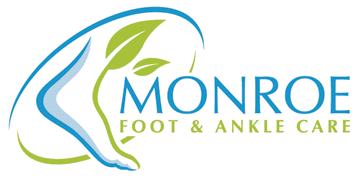For each mile you walk, you place 60 tons of stress on each foot. That’s a heavy load, but your feet can handle it. Too much stress, though, can cause a damaged, painful heel, the most common issue that affects the foot and ankle.
When you continue activity despite a sore heel, the pain only gets worse, and it could lead to a chronic condition with additional symptoms.
At Monroe Foot & Ankle Care in Jamesburg, New Jersey, podiatric physician and surgeon Dr. Elliott Perel and his expert team offer solutions for heel pain and for a whole range of other podiatric problems. Here’s what he’d like you to understand about your heel, its potential problems, and possible solutions.
5 common causes of heel pain
Heel pain mostly results from repetitive stress on the heel, such as with long-distance running, or structural issues with the bones and soft tissues. Five of the most common causes of heel pain include:
1. Plantar fasciitis
This is by far the most common cause of heel pain. The plantar fascia is a strong ligament running from the heel bone to the foot’s tip. When the fascia is stretched too far, its fibers become inflamed, resulting in pain. The pain usually occurs where the ligament attaches to the heel bone, but it can be felt in the middle of the foot as well.
Active adults aged 40-70 are at the highest risk of developing the condition, especially if they’re runners or have jobs where they’re on their feet for long periods.
Women who are pregnant often develop plantar fasciitis because the additional weight puts stress on the ligament. The same is true for those who are overweight or obese.
In addition, structural foot problems such as high arches or flat feet can lead to plantar fasciitis, as can wearing shoes without adequate arch support.
The first line of treatment is simple — rest, icing, braces, and OTC anti-inflammatory drugs. If they don’t help the pain, your doctor can inject a corticosteroid directly into the damaged ligament. A physical therapist can help you strengthen your lower leg muscles and stabilize your walk.
2. Achilles tendinitis
The Achilles tendon is the band of tissue that connects your calf muscles to your heel bone, used when you walk, run, jump, or push up on your toes. Achilles tendinitis is an overuse injury, most commonly seen in runners who have upped the intensity or duration of their workouts, or in weekend warriors.
When stretched beyond its normal range, the Achilles tendon develops multiple microscopic tears. It thickens, weakens, and becomes painful at the back of the heel. You may also have limited range of motion as you flex your foot.
Many treatments are available for Achilles tendonitis, including:
- Rest
- Icing
- OTC anti-inflammatories
- Wearing a brace
- Steroid injections
- Platelet-rich plasma (PRP) injections
- A shoe with a built-up heel
- Surgery in extreme conditions
- MLS laser
3. Heel bursitis
This is an inflammatory condition of the bursa, a fibrous sac filled with fluid at the back of the heel that cushions the bone, ligaments, and muscles. The inflammation can be caused by repeated irritation from landing hard on the heels. It can also result from too much pressure placed on the heel by footwear.
You can feel the pain either deep inside the heel or at its back, and sometimes, the Achilles tendon may swell as well. The pain usually gets worse as the day goes on.
Treatments are similar to both plantar fasciitis and Achilles tendonitis.
4. Sever’s disease
This is the most common cause of heel pain in child and teenage athletes, triggered by microtraumas to the heel plate during a growth spurt. It generally affects girls ages 8-13 and boys ages 10-15.
The heel bone grows faster than the legs’ ligaments, so muscles and tendons can become tight and overstretched. The heel is particularly susceptible to injury since the foot is one of the first body parts to grow to full size, and the heel is not particularly flexible. As it finishes growing, the back of the heel hardens and strengthens.
Icing and physical therapy are two primary treatments, along with taking time off from sports to give the heel bone a chance to finish growing.
5. Heel spurs
These calcium deposits cause a bony protrusion on the underside of the heel bone. They’re often caused by muscle and ligament strains, stretching of the plantar fascia, and repeated tearing of the heel bone membrane. Heel spurs are common among athletes whose activities include a lot of running and jumping.
Again, treatments are similar to those of plantar fasciitis and Achilles tendonitis.
Are you suffering from heel pain? Monroe Foot & Ankle can help. Give us a call at 732-328-6798, or schedule a consultation online with Dr. Perel.
